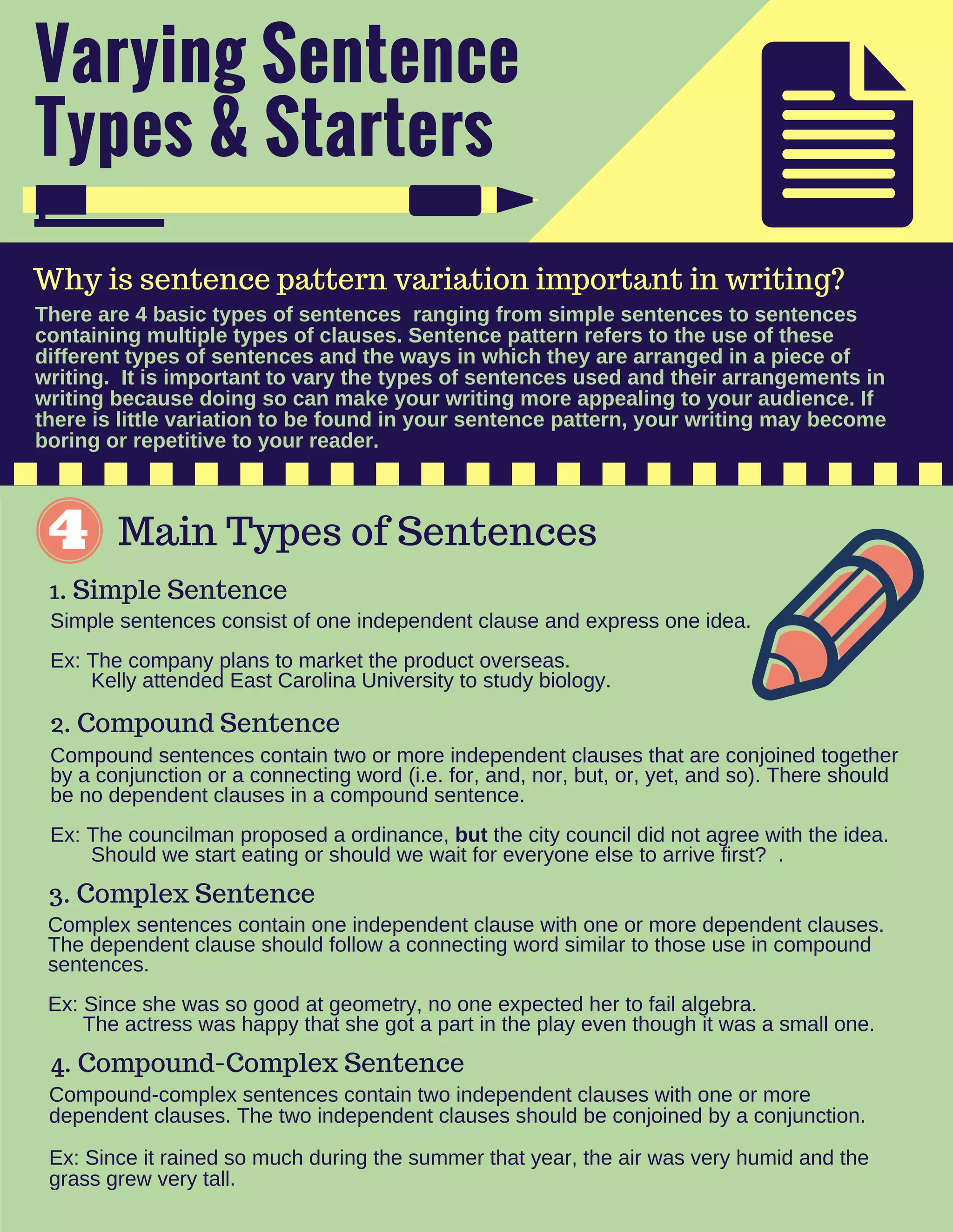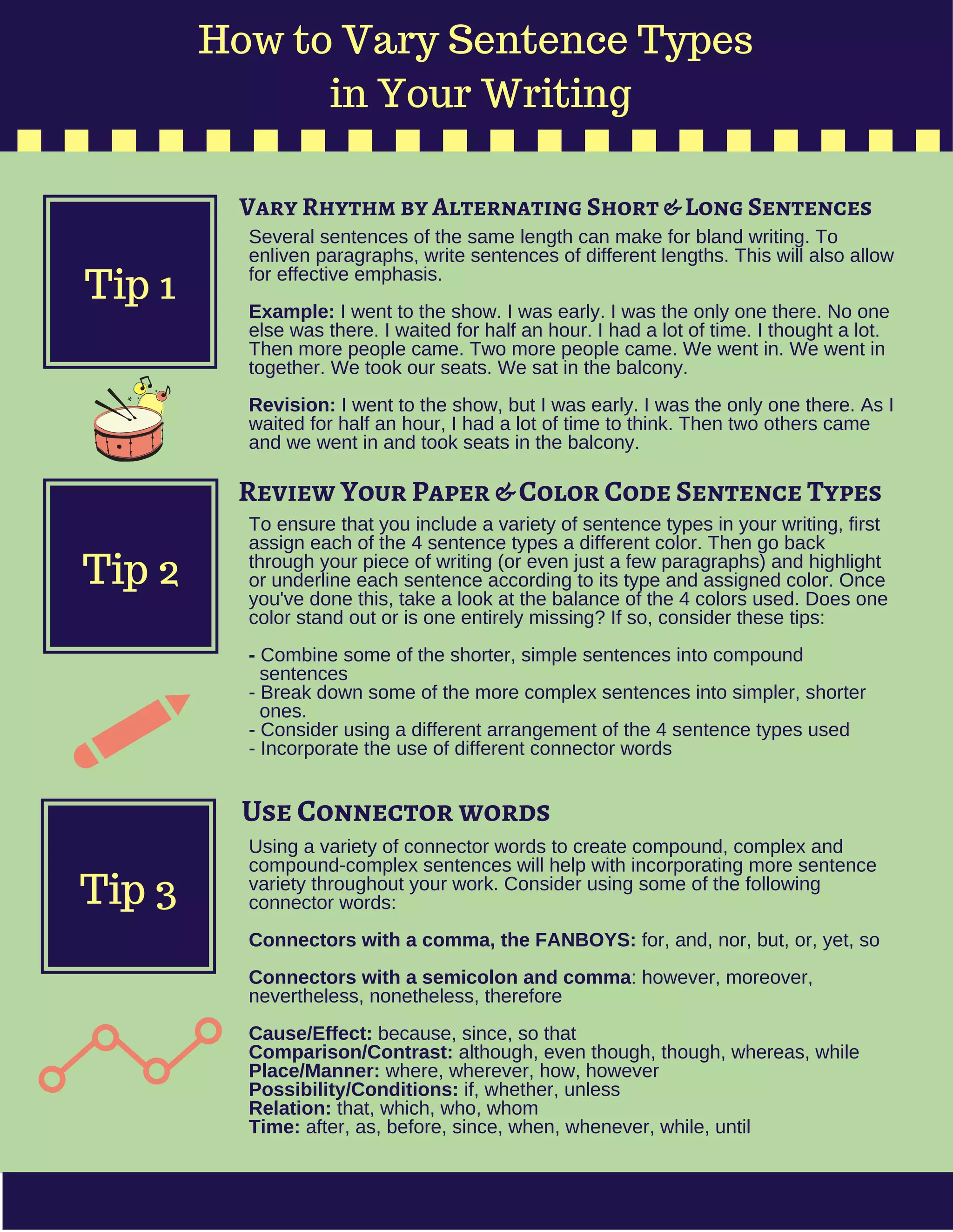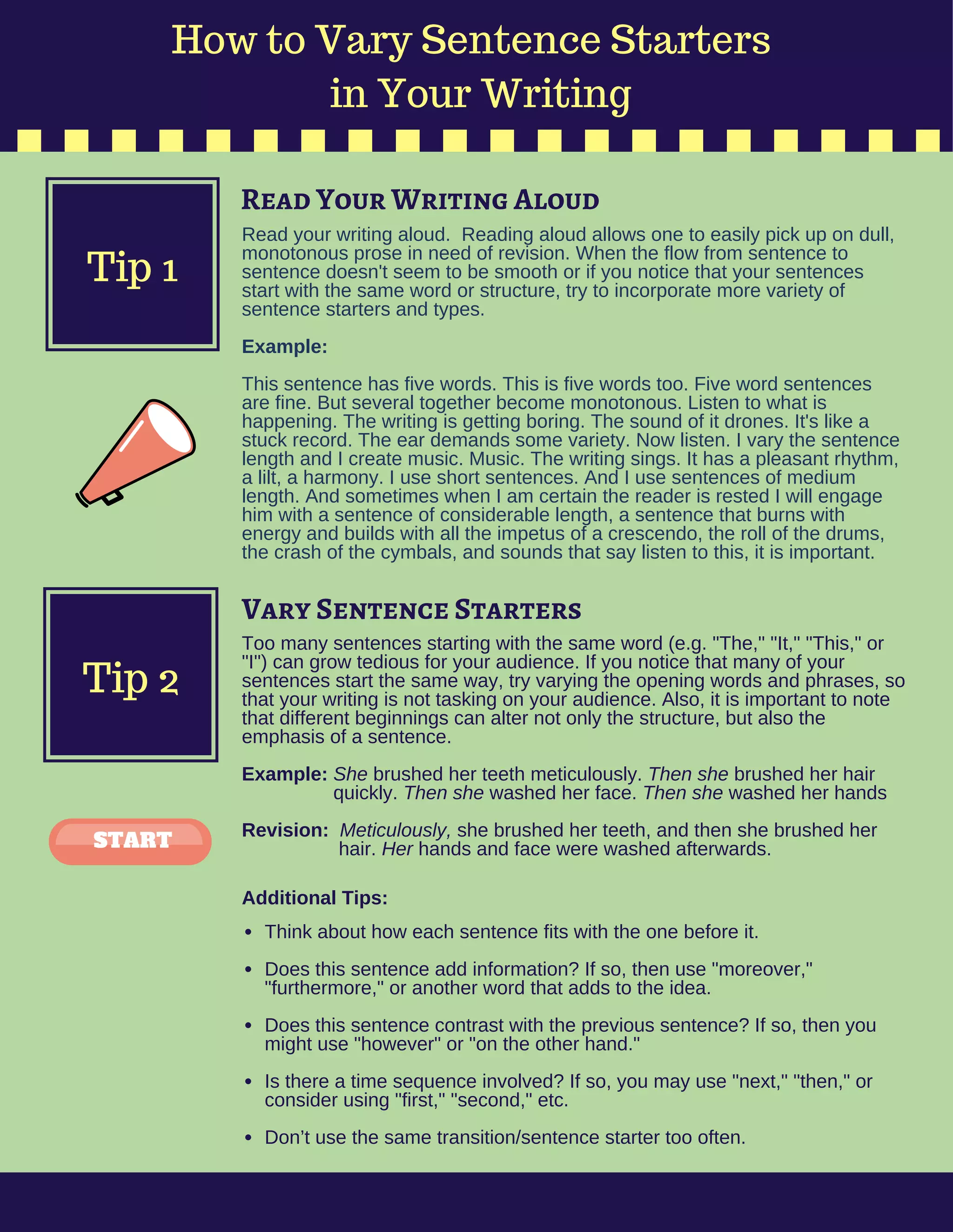This document discusses the importance of varying sentence types and starters in writing. There are four basic sentence types: simple, compound, complex, and compound-complex. Using a variety of these sentence types allows writers to vary their tone and voice and better represent relationships between ideas. The document provides tips for incorporating more sentence variety, such as alternating between short and long sentences, using different connector words, and color-coding sentences by type in one's writing. It also suggests reading writing aloud and varying sentence starters to avoid monotony.



